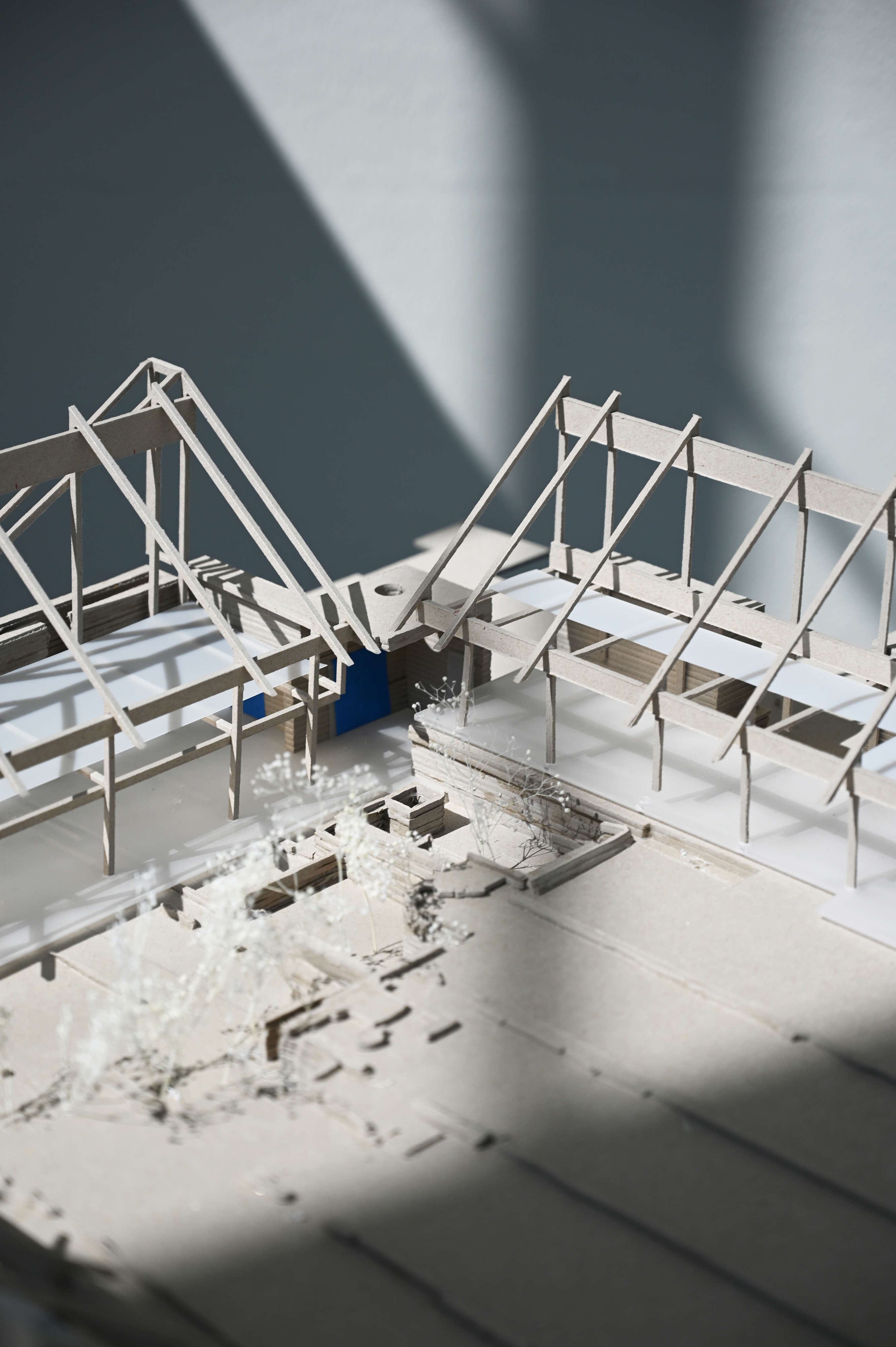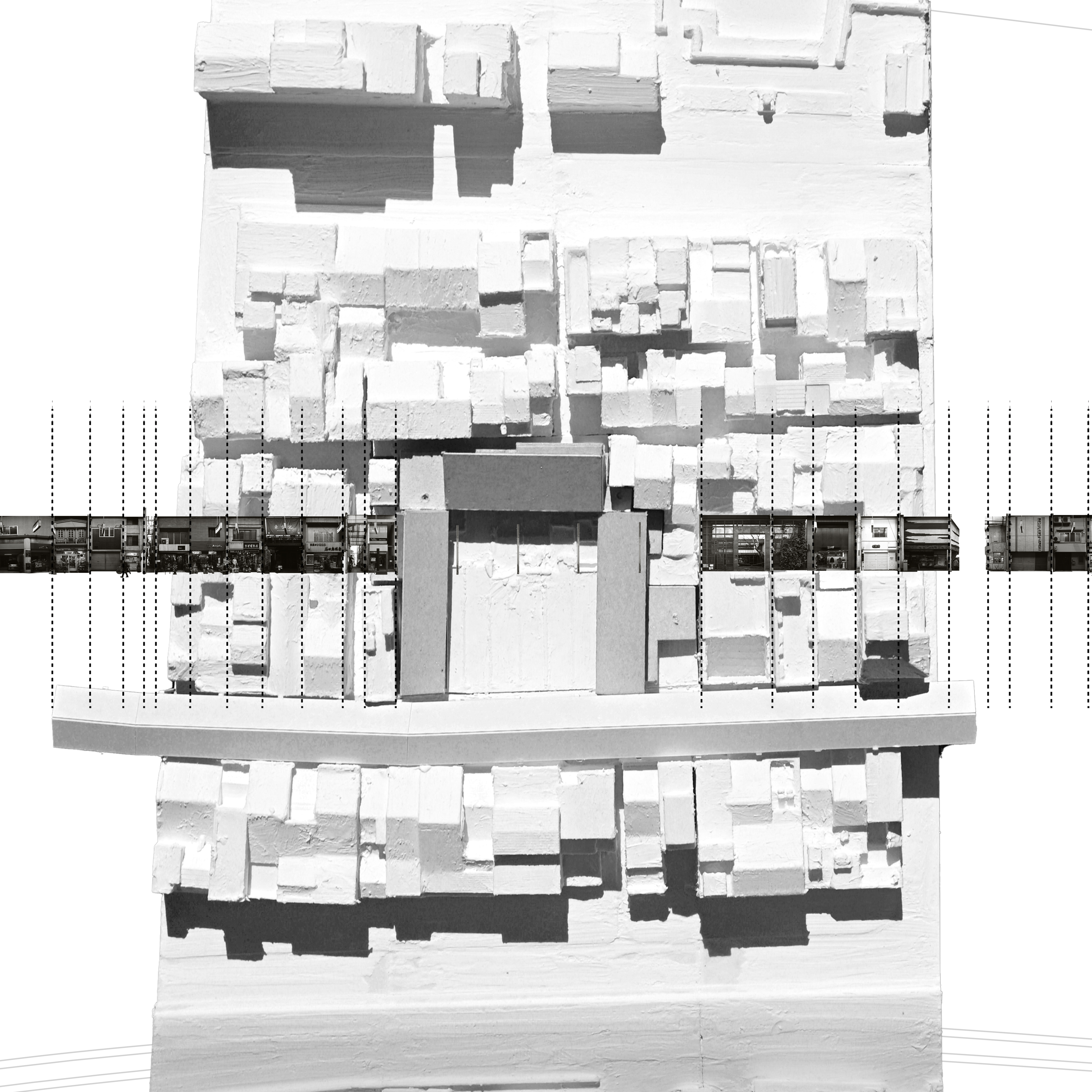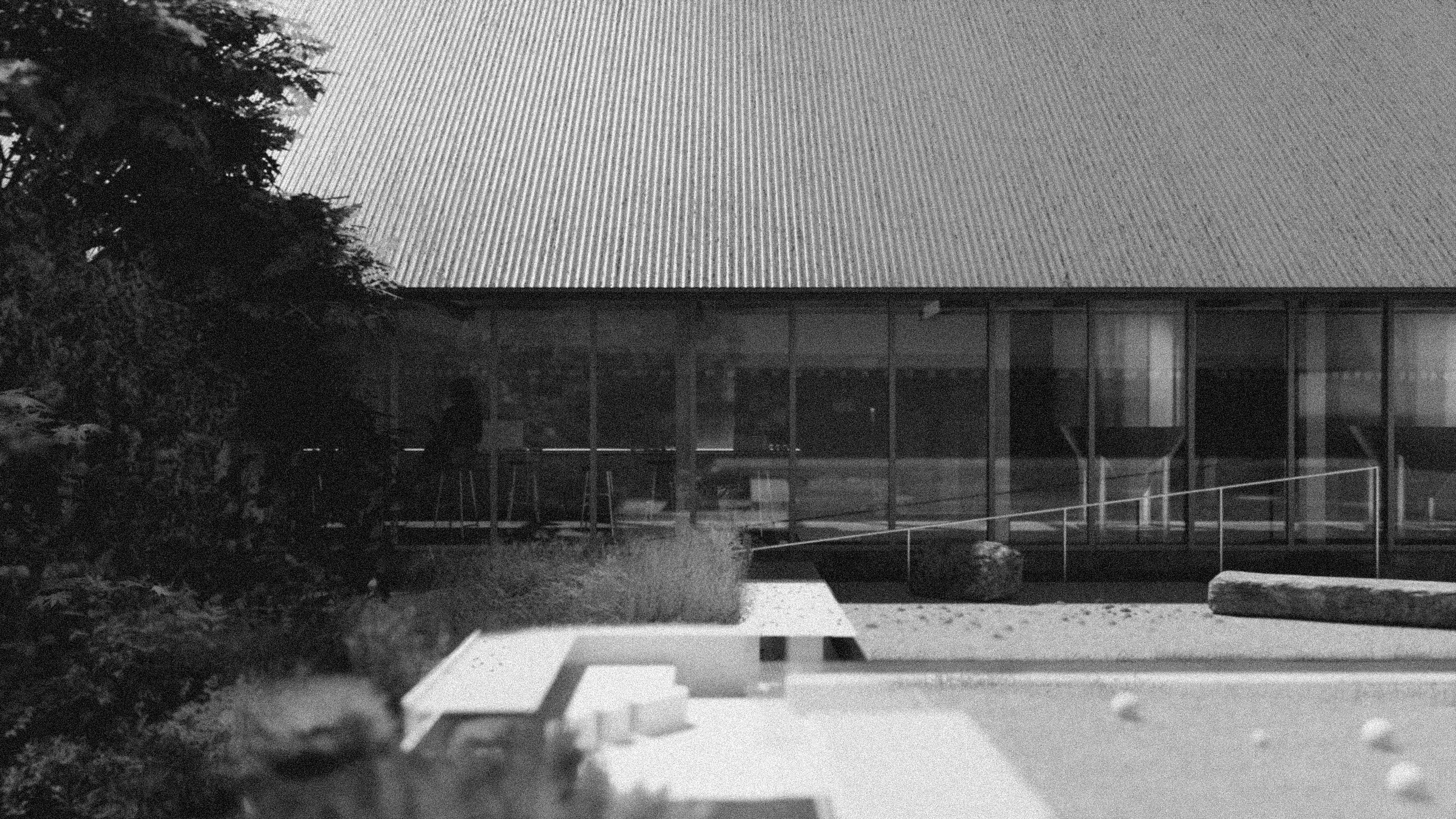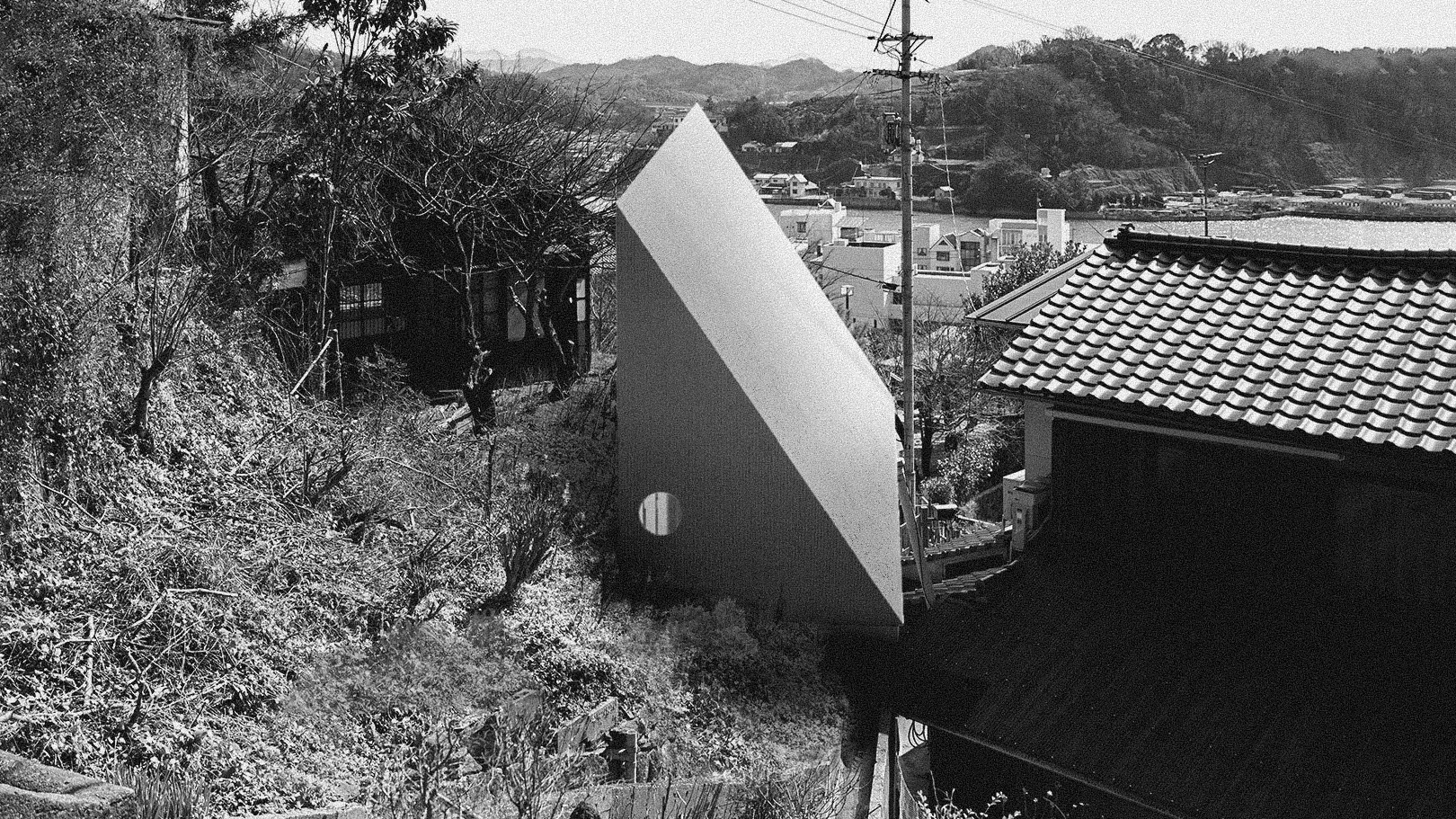Yoro Shisetsu & Albergo Diffuso
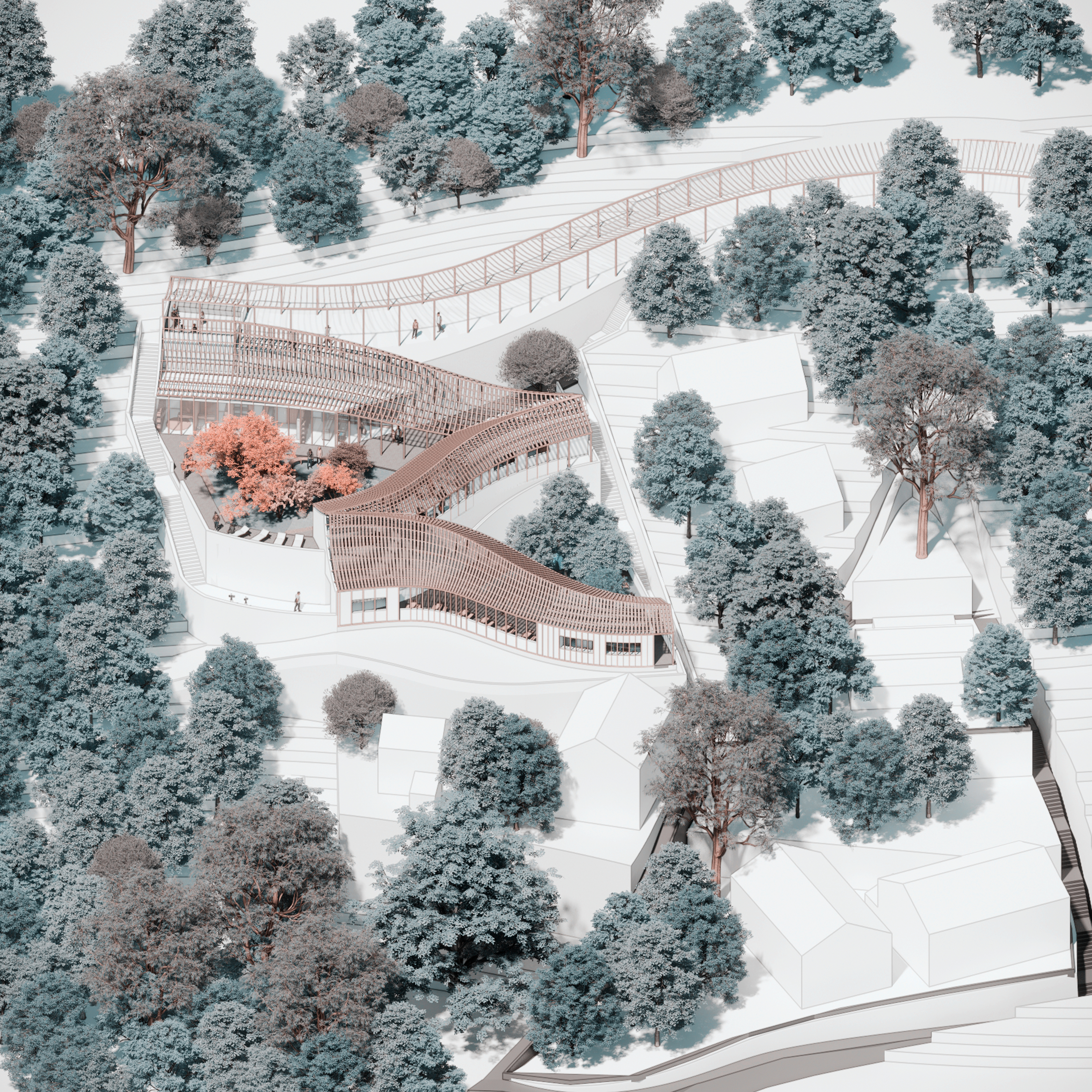
How much, and what, should we build in a post-growth condition? This project investigates the productive potential of voids. Two projects—one a brewery, the other a funicular—are organized along two lines between the hill and the seaside. The first runs parallel to the growth of the city’s shoreline, and the second perpendicular. The brewery plants, collects, and distills yuzu to produce a liquor. The brewery building encompasses a distillery, a bar/restaurant, a shop, and an office. The water-ballast-powered funicular follows an existing drainage path of water on the hill and serves as a tool to both clear away old buildings and construct new ones. The architecture of each structure explores and negotiates the relationship between the built environment and the concept of emptiness.
The design reauthorizes the use of foundation debris left by the demolition of the original houses
The brewery leverages the rhythm of the existing arcade and the vacancy after demolition
The proposal lines the existing void, bracketing it against further development
The water-ballast-powered funicular follows an existing drainage path of water on the hill and serves as a tool to both clear away old buildings and construct new ones
Text and images © Hugh Taylor, 2023
This project was conducted as part of “Revitalizing Onomichi: Architecture, Community, Territory,” a spring 2023 studio at the Harvard GSD. Please click here to read more about this studio and see other projects.
